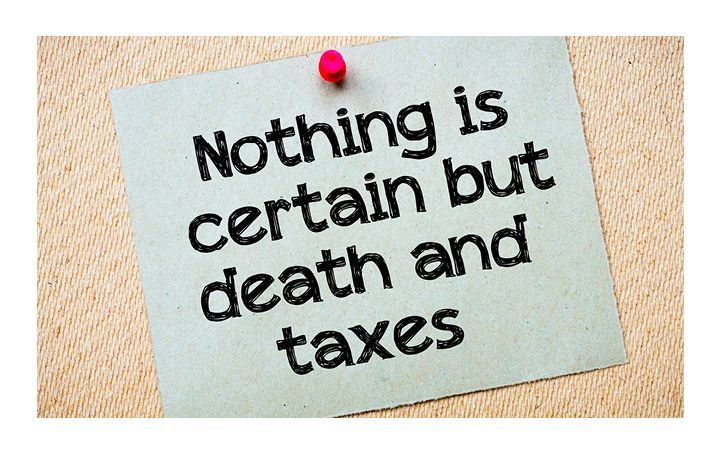Capital gains tax and death, it’s not the end of the world
Capital gains tax and death, it’s not the end of the world. There’s nothing as certain as death and taxes, but tax on death is not so clear. The good news is that when an asset passes to a beneficiary, capital gains tax (CGT) generally does not apply. But down the track when the beneficiary decides to sell that asset, there are many forks in the path.
 There is enough pain and anguish when someone dies, so fortunately there is, in most cases at least, no duty on assets that form part of the deceased’s estate and are passed to a beneficiary, or their legal personal representative (LPR). But as with life, the rules regarding death and Capital Gains Tax are not meant to be easy, particularly when that asset is a “dwelling”.
There is enough pain and anguish when someone dies, so fortunately there is, in most cases at least, no duty on assets that form part of the deceased’s estate and are passed to a beneficiary, or their legal personal representative (LPR). But as with life, the rules regarding death and Capital Gains Tax are not meant to be easy, particularly when that asset is a “dwelling”.
This article will explore the Capital Gains Tax consequences for the deceased estate and the beneficiary of:
- the transmission on death, of an asset, specifically a dwelling
- the subsequent sale of that dwelling.
Capital gains tax and death, CGT on the inheritance of a dwelling
Generally, the law says that there is no Capital Gains Tax liability for the deceased on the transmission of an asset to a beneficiary.
The beneficiary is considered to be the new owner of the inherited asset on the day the deceased person died and capital gains tax (CGT) does not apply to that asset.
This applies to all assets, including a dwelling.
The exception is where the beneficiary is a “tax advantaged entity” (TAE), such as a charity, foreign resident or complying superannuation entity. In this case the deceased estate (not the TAE) is liable for any capital gain or loss attached to the asset. This will need to be taken into account in the deceased’s final tax return in the year in which he or she died.
Capital gains tax and death, CGT on the sale of an inherited dwelling
If the beneficiary subsequently sells the bequeathed asset, this may create a Capital Gains Tax “event”, depending on the status of the property, when it was purchased, when the deceased died and whether the sale qualifies for the CGT “main residence” exemption.
Capital Gains Tax liability on the sale will be determined by whether:
- the deceased died before, on or after 20 September 1985 (when CGT was introduced); and
- the dwelling was acquired before, on or after 20 September 1985; and if acquired post-CGT, whether the deceased died before, on or after 20 August 1996.
The following table identifies when Capital Gains Tax applies to the sale of an inherited dwelling and the relevant cost base. It refers to these two conditions:
Condition 1: Dwelling was sold (note that this means settlement must have occurred) within two years of the person’s death. This exemption applies regardless of whether the beneficiary used the dwelling as their main residence or produced income from it during this period. The two-year period can be extended at the Commissioner’s discretion. New safe harbour rules allow executors and beneficiaries to self-assess this discretion provided a number of conditions are met.
Condition 2: From the deceased’s death until the sale, the dwelling was not used to produce income, and was the main residence of one or more of the following:
- the deceased’s spouse;
- an individual who had a right to occupy it under the deceased’s will; or
- the beneficiary.
CGT on the sale of an inherited dwelling |
||
| Dwelling acquired by deceased (D) | Date of death | Subsequent disposal by beneficiary (B) |
| Pre-CGT (ie before 20 September 1985) | Pre-CGT | No CGT
Exception: dwelling subject to major capital improvements post-CGT and used to produce assessable income |
| Pre-CGT | Post-CGT | No CGT if: Condition 1 or 2 is satisfied |
| If CGT applies, B’s cost base is the dwelling’s cost base in D’s hands at the date of death | ||
| Post-CGT | Before 20 August 1996 | No CGT if:
Condition 2 is satisfied; and D always used dwelling as main residence (MR) and did not use it to produce assessable income |
| If CGT applies, B’s cost base is the cost base of the dwelling in D’s hands at the date of death | ||
| On or after
21 August 1996 |
No CGT if:
Condition 1 or 2 is satisfied; and just before D died dwelling was used as MR and was not being used to produce assessable income |
|
| If CGT applies, B’s cost base is the market value of the dwelling at the date of death | ||
In calculating the Capital Gains Tax, the beneficiary or the LPR cannot use any of the deceased’s unapplied net capital losses against the net capital gains.
Capital gains tax and death, guidance is at hand
If you have inherited a dwelling and are in the dark about the Capital Gains Tax impact of hanging onto it or selling it, we can guide you through the minefield and minimise any tax consequences. Call us on (07) 4723 1223.
Hunter Partners are Accountants, Tax Agents and Financial Planners. We can assist you with all aspect of your accounting, tax and financial planning requirements, call Hunter Partners on (07) 4723-1223.
Personal Tax, Super and Financial Planning
- Created on .
- Hits: 2838